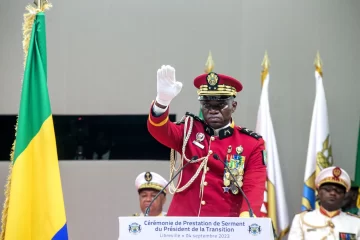South Africa held its breath last week as the African National Congress (ANC) gathered at its five-yearly conference in Mangaung (‘Place of Cheetahs in Sesotho but Bloemfontein on a map) to elect the core of the party’s leadership. Now, before I continue taking about the ANC’s congress, one can ask if this is really important. Do not be mistaken; this is not your little party conference with big speeches in a random town in the middle of a European country. An ANC leadership conference is a defining moment for South Africa’s future political leadership since the leadership of the ANC will undoubtedly be sitting in the Union building in Pretoria for the next couple of years.
Indeed, since the end of Apartheid the ANC has been the dominant political party in South Africa having not lost a single general election since the end of the struggle in the early 1990’s. Their dominance seems to be permanent even with a bad election. Indeed a bad election for the ANC, such as the general election in 2009, usually gives the ANC: 65.9% of the popular vote, 264 seats in a 400 seat national assembly and the presidency in Pretoria. To add to their overwhelming political might, South Africa’s two main opposition parties, the Democratic Alliance (DA) and the Congress of the People (COPE), are unable to gather any political weight or popular support. In 2009, they could only gather a miserable 23% of the popular vote and 97 seats in the National assembly. Thus the ANC’s leadership usually reflects the next South African political leadership and a party conference has immense importance.
Therefore when President Jacob Zuma face’s a leadership contest from his Vice president Kgalema Motlanthe for the top job, a barge of criticism from all over the country and a rebellious wing in his party (interestingly named ‘the Force of change’): South Africa waits in anticipation. Mr Zuma is only too aware of the importance such a leadership vote has: he had his predecessor Thabo Mbeki deposed in a similar vote in 2007, replacing him as party leader and later President. In 2007, Jacob Zuma convinced the powerful union’s establishments and the influential ANC Youth League with its firebrand leader Julius Malema to democratically propel him to power after a period of political seclusion. A period which involved a trial for rape, his resignation as Vice President and an ill-informed, at best, comment on the ways to prevent the spread of HIV/Aids. The President has however forgotten his allies of the past with the unions complaining that Pretoria has abandoned the workers in favour of Western Capital while Mr Malema is no longer a member of the party’s executive after his firebrand rhetoric became embarrassing for the party. However Mr Zuma has nothing to fear from the rebellious wing or the unions. Indeed, he crushed his opponent with over 2900 of the 4000 votes up for grabs (his opponent only won 991 votes). But what does this mean for Madiba’s rainbow nation?
Zuma’s last months in office have been quite a rollercoaster. The President has had to deal the fallout of the Marikana mines massacre in august where 34 miners were shot dead by a trigger nervous police after 2 officers had been killed the day before in strikes over wages with the owners of the complex Lonmin. Since then social tension has been rife with the mines and the immense agricultural sector has been continuously rocked by strikes with workers demanding better pay. This is only part of a general feeling of discontent about poor government services and growing inequalities. Indeed the gap between the rich and poor has increased dramatically since the end of Apartheid, as relative poverty only slightly fell and the rich, white or black, grow even wealthier (The Gini coeffient ranked South Africa as the most un-equal country in the world). To add to that, the education system is in complete disarray and over 15% of the population is infected with HIV/Aids. The economy is also in turmoil, growth since the start of the world financial crisis has been dismal with Moody’s cutting South Africa’s credit rating. For all the Presidents efforts, maybe South Africa is not ready to be part of the BRIC nations after all. So the initial hope and joy of post apartheid South Africa under Mandela’s Rainbow nation seems to be fading.
But let’s not put South Africa in the failed state basket just yet! The economy’s foundation is sound and represents over 25% of the African continent’s GDP. It has all the products of a modern economy: with a well developed infrastructure, a varied manufacturing sector, an immense mining sector (diamonds, gold, platinum: you named it, they got it!), a booming tourist industry (8 millions tourists in 2010, 2 millions from outside the African continent), a modern export orientated agriculture and four of the largest financial institutions in Africa. Their democratic system is exemplary; the economist recently defined the South African constitution as ‘liberal and inspiring’, with an upbeat and modern society. For example they are the only country in Africa to have legalised homosexual marriage (comparatively to the rest of the continent where Homosexuals face the death penalty). Their response to the HIV Aids pandemic and the chaos in the education system, although slow at start, has been impressive by African standards with a wide ranged anti-viral drug distribution program set-up and already under way for example. Though South Africa is facing a difficult moment in its development it is far from being dead, the dream is having a rough ride but it is not over.
Also they gave us an amazing World Cup and Nando’s, which must count for something!
By: Alexandre Raymakers


